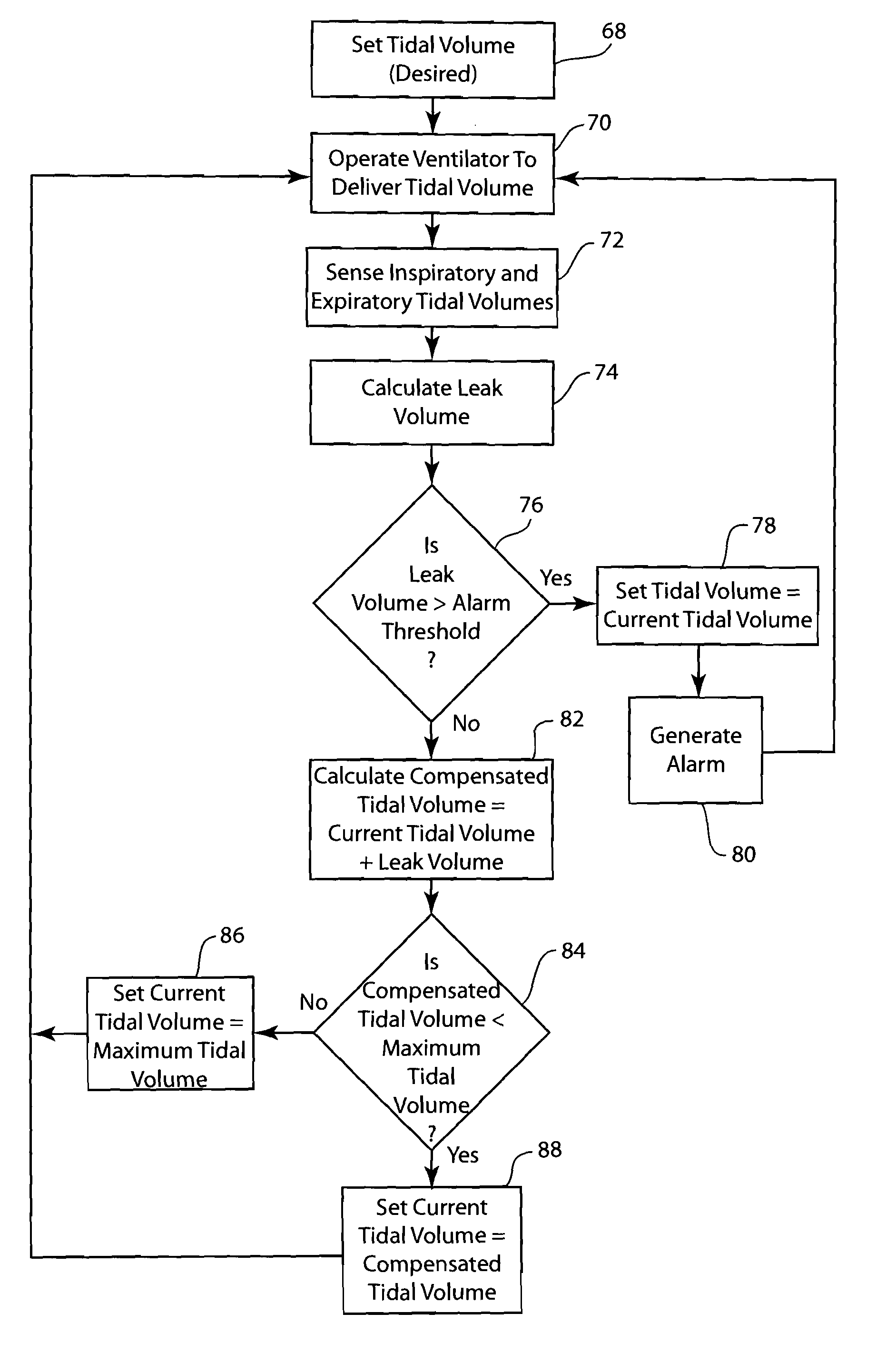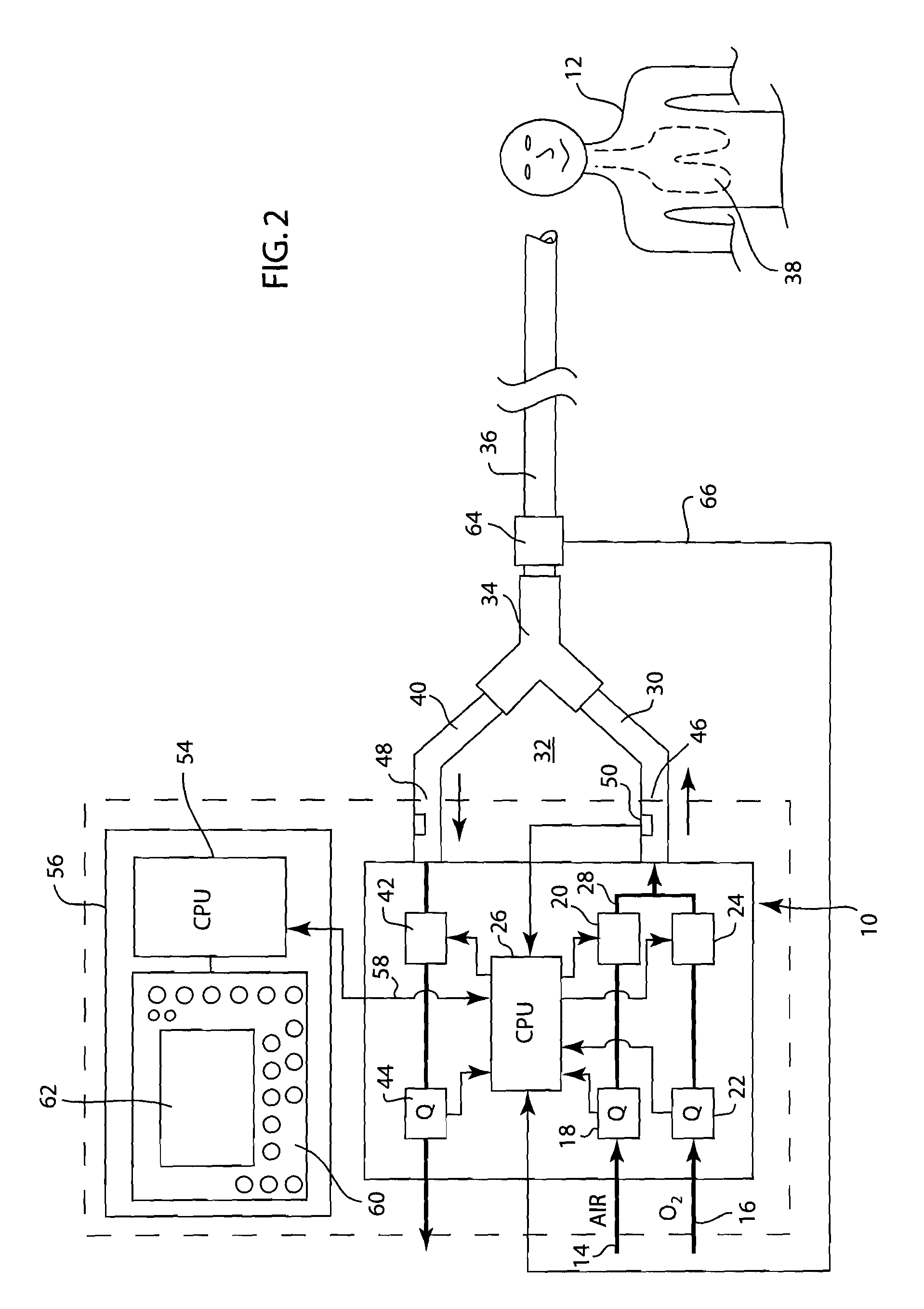Method to limit leak compensation based on a breathing circuit leak alarm
a leak alarm and leak compensation technology, applied in the field of operating a ventilator, can solve the problems of loss of tidal volume of gas delivered by the ventilator during the inspiratory phase, loss of expired breathing gas,
- Summary
- Abstract
- Description
- Claims
- Application Information
AI Technical Summary
Problems solved by technology
Method used
Image
Examples
Embodiment Construction
[0013]FIG. 1 shows a mechanical ventilator 10 for providing breathing gas to a patient 12. Ventilator 10 receives air in a conduit 14 from an appropriate source, not shown, such as a cylinder of pressurized air or a hospital air supply manifold. Ventilator 10 also receives pressurized oxygen in conduit 16 from an appropriate source, not shown, such as a cylinder or manifold. The flow of air in ventilator 10 is measured by flow sensor 18 and controlled by valve 20. The flow of oxygen is measured by flow sensor 22 and controlled by valve 24. The operation of valves 20 and 24 is established by a control device such as central processing unit 26 in the ventilator.
[0014]The air and oxygen are mixed in conduit 28 of the ventilator 10 and provided to inspiratory limb 30 of breathing circuit 32. A nebulizer (not shown) can be positioned between the ventilator 10 and the inspiratory limb 30 to introduce a medical drug as desired by the clinician. Inspiratory limb 30 is connected to one arm o...
PUM
 Login to View More
Login to View More Abstract
Description
Claims
Application Information
 Login to View More
Login to View More - R&D
- Intellectual Property
- Life Sciences
- Materials
- Tech Scout
- Unparalleled Data Quality
- Higher Quality Content
- 60% Fewer Hallucinations
Browse by: Latest US Patents, China's latest patents, Technical Efficacy Thesaurus, Application Domain, Technology Topic, Popular Technical Reports.
© 2025 PatSnap. All rights reserved.Legal|Privacy policy|Modern Slavery Act Transparency Statement|Sitemap|About US| Contact US: help@patsnap.com



